Towering high–heels, flashy dresses, and colorful wigs: the iconic symbols of drag performance, a powerful form of art. What was once a countercultural rebellion, drag has since become a well–known phenomenon, generating both fanaticism and contention.
A lot of the credit goes to RuPaul’s Drag Race, which since its initial premiere in 2009, has become nothing short of a cultural phenomenon, catapulting drag into the mainstream. But drag has been around for much longer. During the gay rights movement of the 1960s through 80s, gay and transgender people of color fought for equality, acceptance, and freedom of expression. They were the original queens, truly the blueprint for drag culture today, and its current popularity is a product of decades of LGBTQ activism.
And still, legislation like the drag bans recently passed in Tennessee and several other states threatens this performance art. Far right–wingers perpetuate harmful narratives portraying drag as deviant and capable of corrupting young children, aiming to extinguish forms of gender expression that break the binary.
Changing social and political climates have transformed the drag scene over space and time, now ushering in a new crowd of Gen Z performers working alongside long–time professionals. Recent turning points like the COVID–19 pandemic and the Black Lives Matter protests are implicated in these many manifestations of drag and collective efforts to make it an inclusive space. There’s more to drag than meets the eye, and our city’s unique environment has produced a complex network of performers and community members that transcends the sum of its parts.
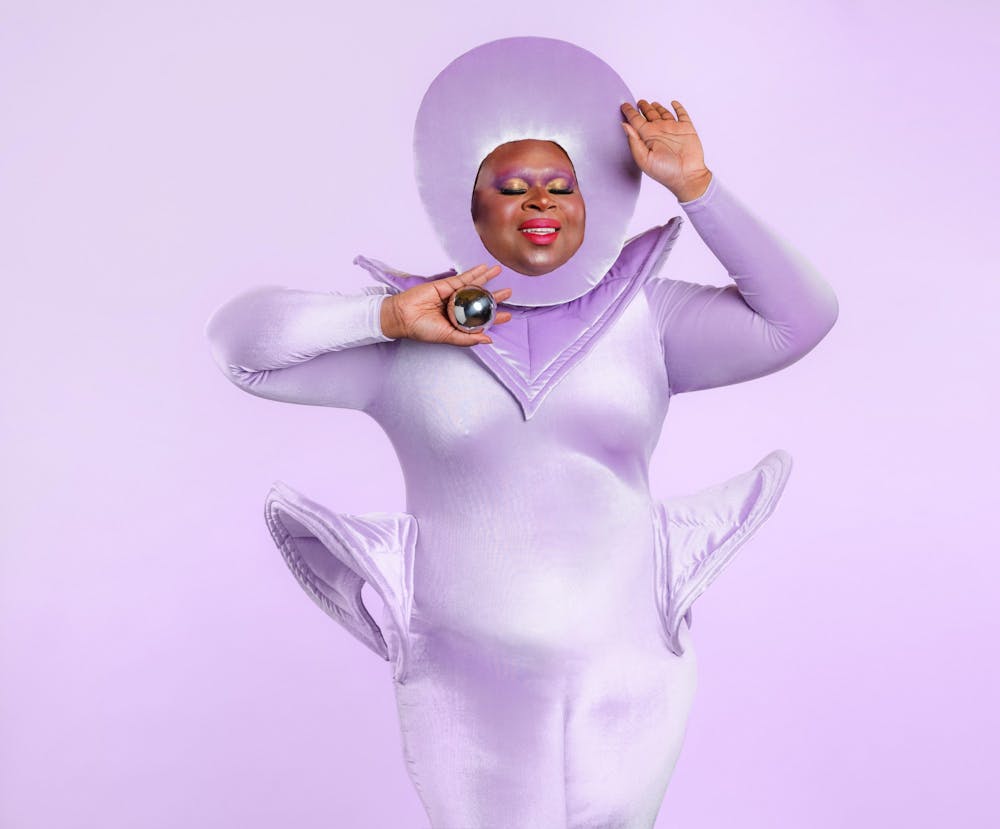
Photo courtesy of Icon Ebony–Fierce | Photo taken by Joe Mac Creative
Philly has maintained a flourishing drag scene that exemplifies the character of its inhabitants: a conglomeration of lip syncing, live singing, burlesque, competitions, and comedy, to name only a fraction of what’s offered. It gestated in the Gayborhood, located near Washington Square, among other hubs of LGBTQ culture. “We are a very eclectic city. When you come to Philly, you will find a show every single day, and it's always going to be something different,” says Icon Ebony–Fierce, a drag artist with almost 13 years under their belt.
Before their drag career began, they were an emcee at underground shows, responsible for hyping up the crowd. Since their early twenties, Icon Ebony–Fierce liked to experiment with gender expression through clothes and makeup, so the transition to drag happened pretty naturally.
Some performers have been in the business even longer than Icon Ebony–Fierce. Ian Morrison, better known by his stage name Brittany Lynn, started his drag career in the 1990s. After playing Frank N. Furter in a Philly production of the Rocky Horror Picture Show—which he calls “bootcamp for drag”—and a stint as Alice the housekeeper in a live version of the Brady Bunch, Morrison was invited to participate in a Thursday night drag competition. Against all odds, as a 22–year–old struggling college student going up against drag legends, he won and Brittany was born.
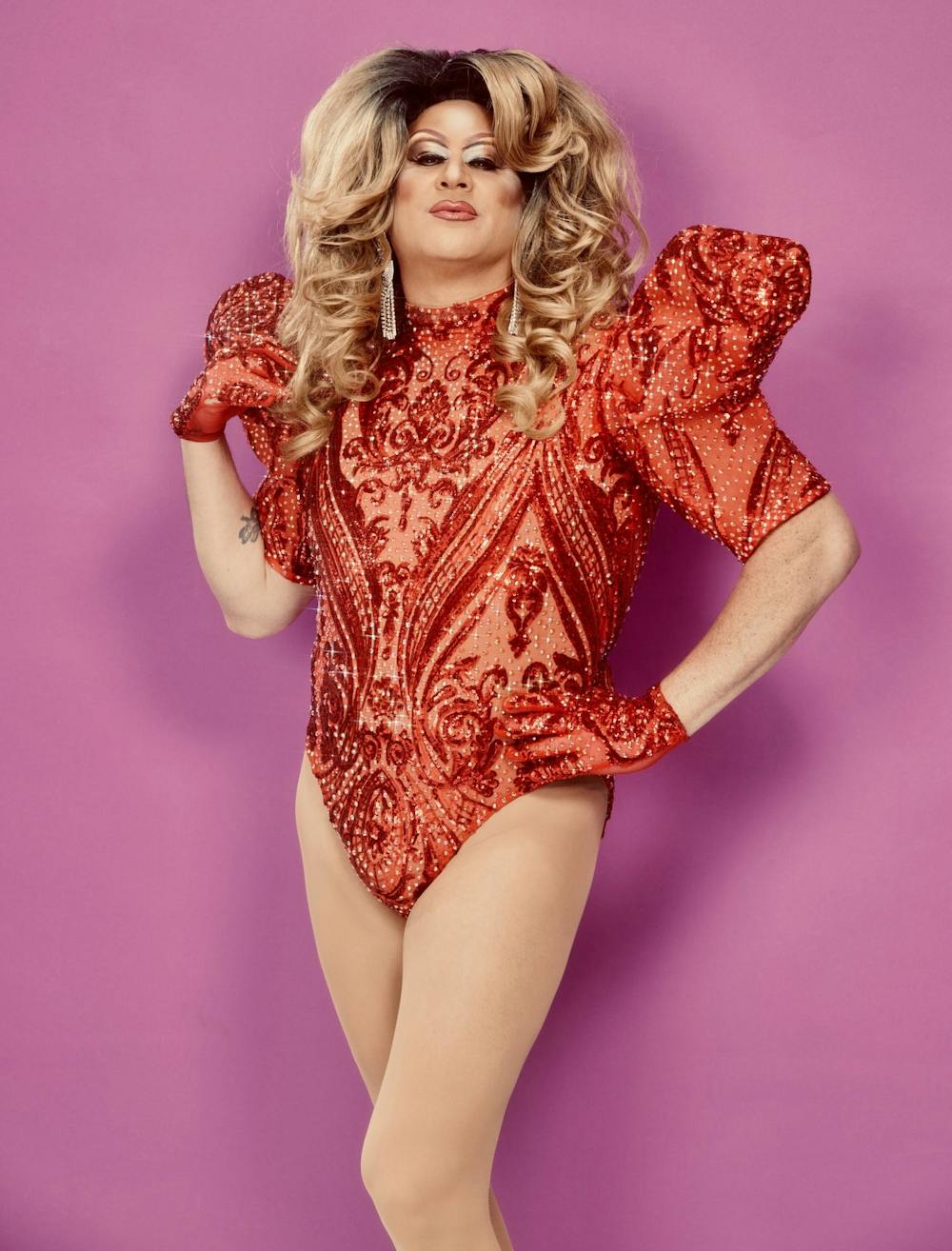
Photo courtesy of Brittany Lynn | Photo taken by StevieChris Photography
Back then, the Philly drag scene was almost exclusively competitions with very few regular performances, so Brittany made friends with the drag queens who worked at Bob and Barbara’s, a lounge at 15th and South. She got a job working alongside Miss Lisa Lisa, who has hosted shows there for over two decades.
Brittany continued to gain fame and is now one of the biggest names in Philly drag. She successfully marketed her drag persona at a time when the internet and social media didn’t exist by handing out flyers in front of clubs. A degree in Journalism, PR, and Advertising from Temple University prepared Brittany well for the difficult task of securing a foothold in the competitive drag scene.
Even when she worked in advertising, Brittany was deeply invested in the LGBTQ community. She was the editorial assistant for the Philadelphia Gay News, the head of marketing and advertising for the 1–800–Gay–Live chat line—a way for gay people to meet before the invention of the internet—and was a PR and Ad Rep at Grindr and Manhunt. “I've made every dollar ever from the gay community, so that's why I try to bring gayness to these areas,” says Brittany.
It’s not uncommon for drag artists to have a day job on top of their performance schedule. For some, like Drew Gaver a.k.a. Bev, it’s just not feasible to live off their drag income. On stage, Bev is a comedic drag queen making use of her background in improv theater, but from Monday to Thursday, Gaver is the office manager of a dental practice. Bev performs almost every weekend, usually two to three shows on Saturdays, adding up to an exhausting work week.
Others are seeking to create a meaningful connection between drag artistry and their more traditional means of employment. Icon Ebony–Fierce is the Student Power Leadership And Activism Together program manager at GALAEI, a QTBIPOC radical social justice organization located in West Kensington. “My mission as not only a performer but also a curator was to provide safe spaces for marginalized communities that were ostracized from the Gayborhood,” they say.
Many drag performers in Philly use their platform to engage in various forms of activism. Brittany used to work for The Philadelphia AIDS Consortium as a representative who toured the city teaching about gender identity. She also runs a local chapter of Drag Queen Story Time in coordination with the public library system, deconstructing gender norms while entertaining people of all ages with a good book. Similar programs that exist across the country have come under attack in the recent wave of anti–drag sentiment. Brittany has won several awards for her community service, and city council even declared March 15 Brittany Lynn Day to celebrate her accomplishments.
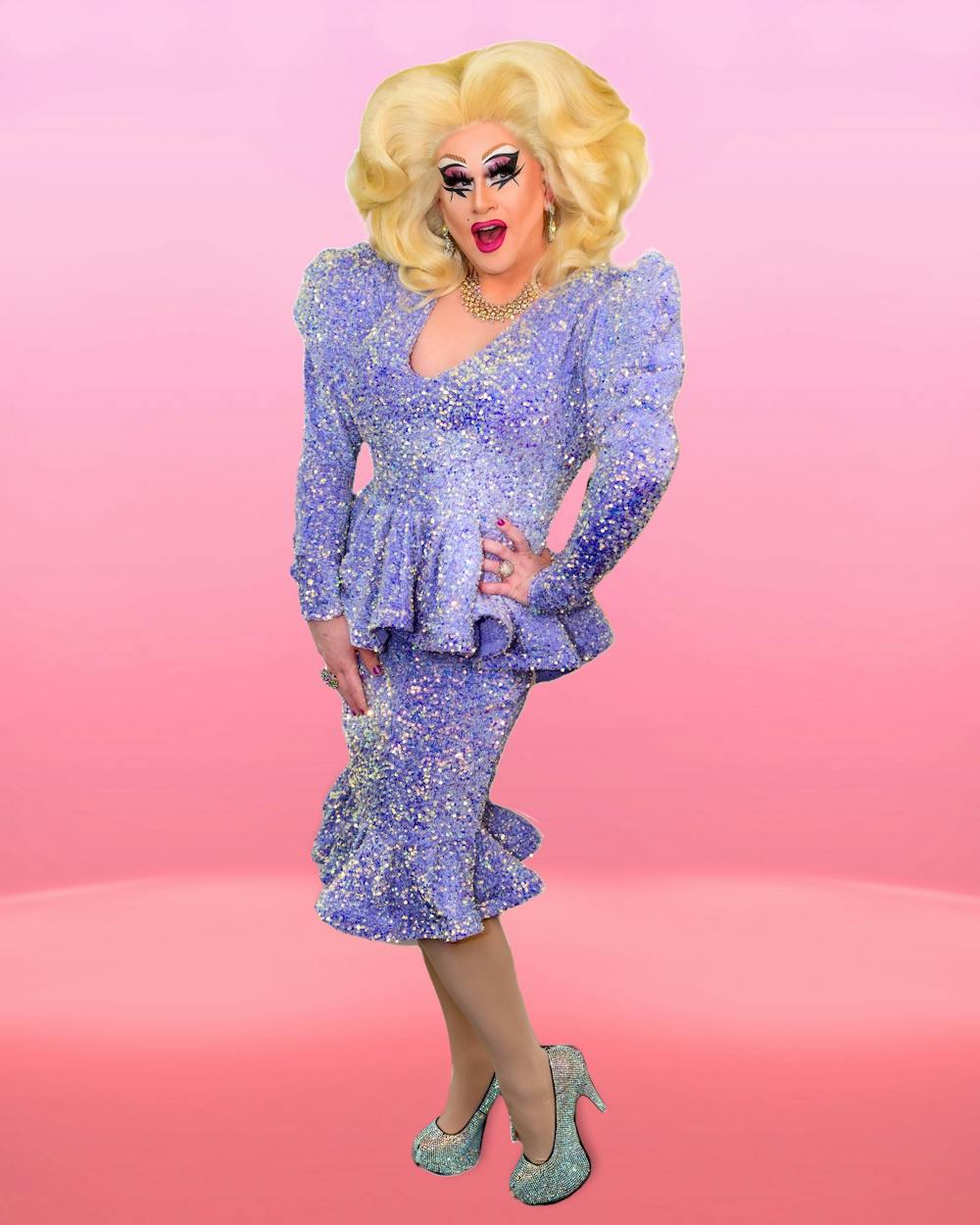
Photo courtesy of Bev | Photo taken by Alexander John Photography
Unfortunately, the COVID–19 pandemic threw a wrench in the Philly drag scene and related social justice efforts. Without the ability to hold in–person drag shows under quarantine restrictions, performers lost a primary source of income.
Gaver had just reached his savings goal that would allow him to quit his day job and pursue drag full–time when the city shut down. Fortunately, working in the healthcare sector provided some security, and he chose to step back from drag for a time. He says that some full–time drag artists turned to OnlyFans as an alternative “because it was the only way that these performers who had been relying on that income could do it.”
Like a lot of industries, drag transitioned to the online space to survive and performers had to get creative. With the help of a tech–savvy roommate, drag queen VinChelle, who made a name for herself when she won Philadelphia Drag Wars back in 2015, “did not take COVID lying down” and was able to stay busy doing digital shows. Zoom bingo and trivia hosted by drag queens proliferated during the pandemic.
Icon Ebony–Fierce started a donation–based web series called Ebony’s Confessions where they reacted to wild stories submitted anonymously and gave advice. They also did a number of drag shows that were pre–recorded music video style.
But COVID–19 didn’t just push people’s lives online—it was a major social reckoning that exposed real–world injustices previously silenced by the day–to–day. In the wake of the murder of George Floyd and the ensuing Black Lives Matter protests, community members began to call out inequity and mistreatment in Philly drag. “When I entered the drag scene, it was a little bit of a culture shock. I've met some amazing people, but also some people that were shockingly racist and transphobic. My impression was that everybody would have a rainbow flag waving, but I guess I was pretty naive,” says Icon Ebony–Fierce.
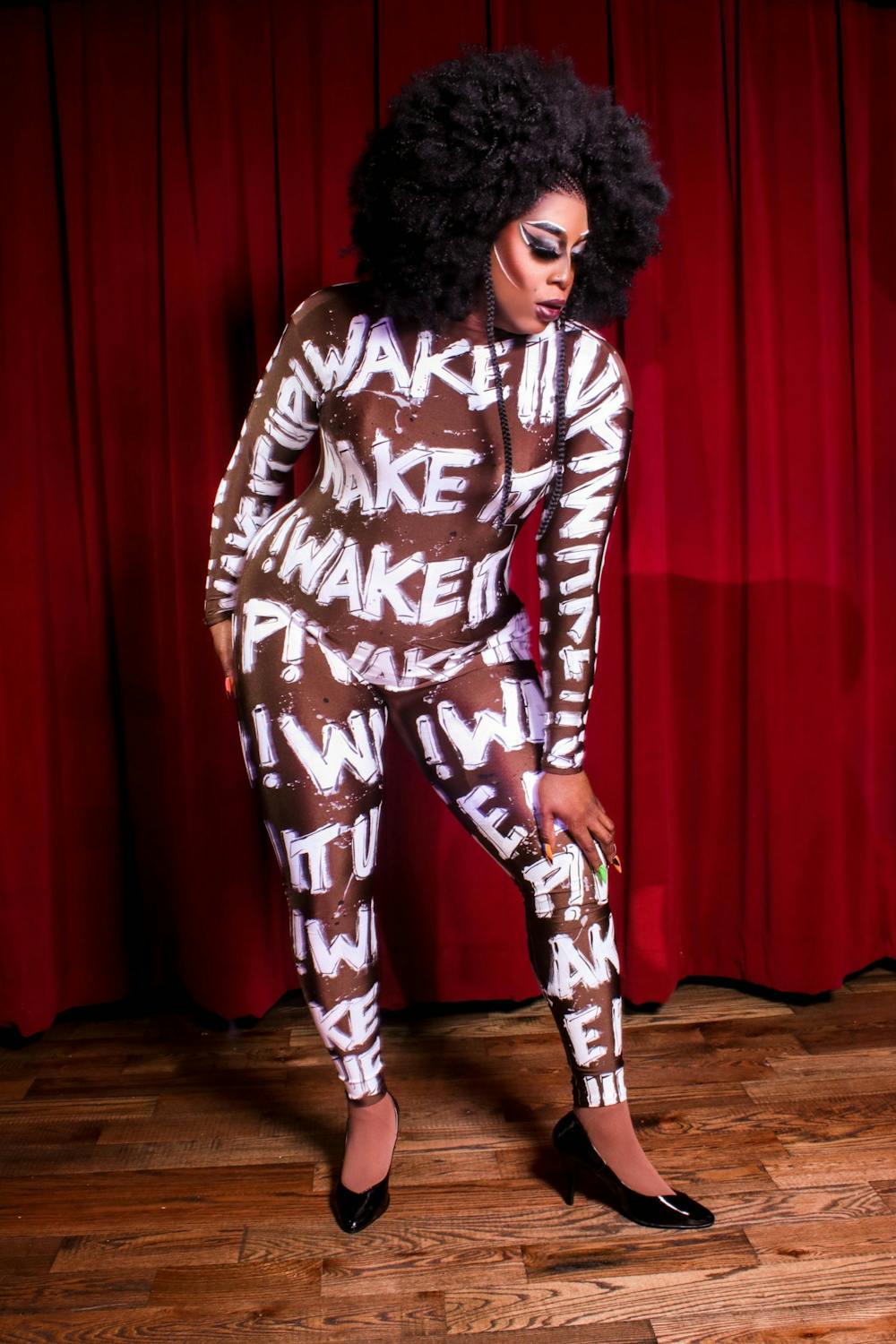
Photo courtesy of Vinchelle | Photo taken by Jonathan Hernandez
In response, a group of performers of color, led by VinChelle and another queen, held a town hall. They called out other drag artists, bar owners and managers, and producers for racism, a lack of diversity in casting, and sexual harassment, forcing people to apologize or step down. VinChelle says the initiative put a huge target on her back, because a lot of white producers didn’t follow through with the promises they made.
According to Icon Ebony–Fierce, “There's still a lot of people ignoring our demands, but I would say that the scene is completely different now. People are standing up against injustice in the community. People are not afraid to speak out. The casts are more diverse.”
VinChelle developed several projects with the goal of uplifting historically marginalized communities in the Philly drag scene. During the same period of social unrest, she started a talk show called The Black Diaries which gave Black entertainers a platform to discuss their experiences.
Inspired by The Vixen, a Drag Race alum, VinChelle hosted a Black Girl Magic Philly special in February of 2019 featuring 18 local Black performers. The show was only supposed to last one night, but it was so successful that she kept it going, and now she hosts this celebration of Black talent on a bimonthly basis. “I love that Black people that want to start drag can look at that show and think ‘look at all these people that look like me’ or ‘I feel comfortable here,’” she says.

Photo courtesy of Deej Nutz | Photo taken by Joe Mac Creative
Non–binary and gender–fluid burlesque and drag artist—they like the inclusive term “drag royal”—Deej Nutz is also working to promote diversity in the industry. They grew up in Philly, went to college here, and are still living and working in the city. A few years ago at the beginning of their performance journey, they joined a burlesque troupe of mostly plus–sized performers. It was before the era of Lizzo, so Deej Nutz didn’t know this type of movement was even a possibility for plus sized people until they met the troupe. The typical seductive striptease performed by a fit, AFAB body associated with burlesque is certainly beautiful, but “Where’s everyone else?” they ask.
As someone with both stereotypically masculine and feminine traits, Deej Nutz “want[s] to confuse people when it comes to gender.” They hope to inspire others to express their gender and sexuality on their own terms because it isn’t anyone else’s business, especially not politicians. Some advice from this drag royal: Be louder.
Deej Nutz, who has multiple sclerosis, performs with a cane. Before their official entrée into the world of Philly drag in February of 2019, they’d never seen another drag performer use one out of necessity. Due to their disability, Deej Nutz was forced to quit their job the previous month and a little over a year later the country went into lockdown. But spending time at home and online ended up immensely benefiting their performance career.
In the comfort of their own space and with the ability to take breaks when necessary, Deej Nutz could create without sacrificing their physical well–being. They had plenty of time to hone their filming and editing skills, developing content for digital drag shows around their house. The fast–paced scene can be exhausting to navigate for someone with a chronic disability, so the introduction of an alternative performance platform during the pandemic was an opportunity to craft the Deej Nutz fantasy in all of its burly glory.
Insufficient accessibility in drag venues limits both who can perform in and who can attend shows. Deej Nutz believes that proactively addressing the problem—adding wheelchair ramps, elevators, ASL interpreters, and livestream capabilities—rather than waiting to be called out would demonstrate a genuine commitment to promoting diversity. “It's like ‘Well, we've got enough people giving us money, so why do we care about the people who can't make it into the space?’ Why don't you care?” they demand.
Things are changing for the better. Deej Nutz praises Philly for exhibiting an intentionality in featuring Black performers in drag shows and hiring Black producers, and VinChelle finds the Philly drag scene unique in that it “is very inclusive. We accept all types of drag and all types of performance styles.” Icon Ebony–Fierce cites “a big shift in the community with a lot of new amazing Gen Z performers who are not afraid to express themselves.”
Still, tension remains in the Philly drag scene between the old and new generations of performers. “These kids that put a Party City wig on their first day of doing drag got something to say,” proclaims Brittany. But that doesn’t mean there isn’t bad blood among the seasoned professionals too. While the Gayborhood is a safe haven for some, the deeply entrenched exclusivity along lines of race and gender identity cannot be so easily overturned. “I personally enjoy going out in the Gayborhood, but I also realize that I'm a cis, white, gay guy, and there are other communities that may not feel as welcome,” says Gaver.
Like most industries, the drag scene in Philly is imperfect. Performers bicker and not everyone gets along, but that’s to be expected when so many big personalities are brought together. With the increasing popularity of drag, even in the last five years, more people are vying for a limited number of positions.
Bev’s impression of the Philly drag scene is “We’re just outspoken here and we're all fighting for the same attention,” which may be part of the reason the city boasts such diverse talent. As Brittany puts it: “Honey, I'm gonna go out and make these coins. I'm on my way to the bank right now. Sit at home and be mad.” She’s truly snatching wigs and booking gigs.
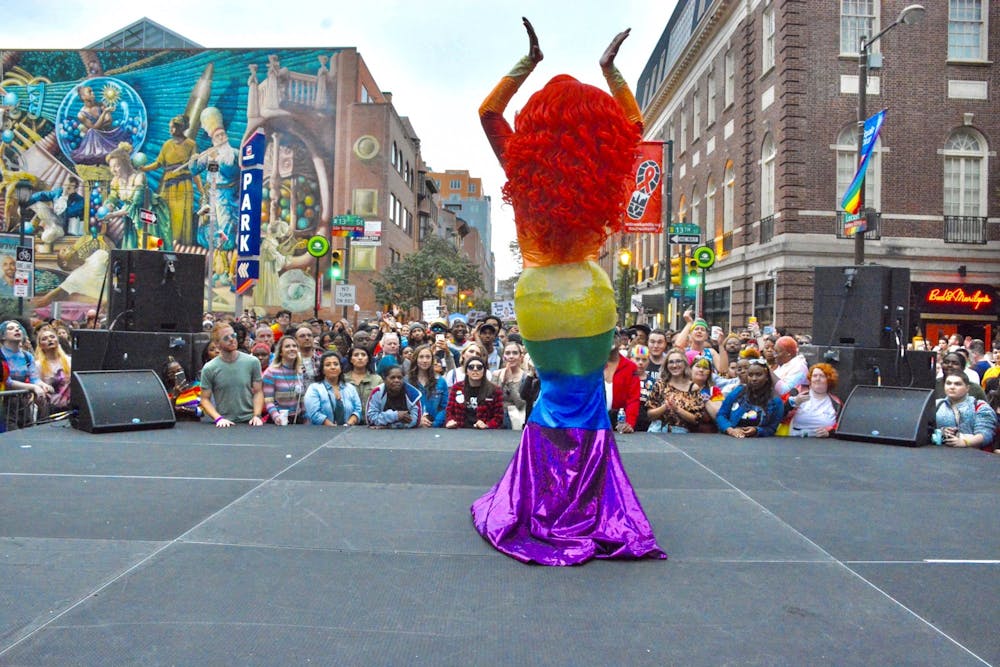
Photo courtesy of Bev, on stage at Outfest 2019 | Photo taken by Patrick Hagerty
Shared ideals ultimately bring the drag performers of Philly together, whether it’s addressing injustice and ensuring diverse representation in the community or raising money for the AIDS charity event, Code Red.
Brittany Lynn founded her organization Philly Drag Mafia to support fellow drag queens before the Philly scene expanded beyond competitions. At the time, performers only made money if they won the competition and weren’t permitted to collect tips, so there was almost no way to transition to doing drag full time. Even those who were hired to host an event were usually paid in drink tickets. Philly Drag Mafia became a sort of drag union, with Brittany demanding the venue provide a dressing room, security guard, and a certain amount of pay in addition to drink tickets to all the queens who worked for her.
Initiatives like the competition show Snatcherella 3000, co–produced with four others by VinChelle and Icon Ebony–Fierce, build connections between drag performers just starting out and artists who have already created a name for themselves. “These new queens are amazing. They're hungry for it,” says VinChelle. Not only is Snatcherella addressing a lack of visibility for minority drag performers and subverting unfair judging practices—all the competitors receive a salary.
The passion for drag and the social change that can be achieved through this form of artistry expressed by Philly performers is explanation enough for why they push through the periodic negativity. Brittany, who has committed the better part of her adult life to drag, and Bev, who dons heels and a hot costume after a full work–week to get a laugh out of the crowd, are proof.
“My favorite part about performing is truly connecting with the audience … I get tired, but the excitement from the crowd and connecting with someone and changing someone's day around … sometimes we take that for granted,” says VinChelle.
In today’s world, drag is becoming more important than ever. An art and a form of expression, drag creates a community of people who are unafraid to show the world the most authentic version of themselves. “I would have never been exposed to anything remotely like this growing up, so I'm glad that I'm able to see these things now,” says Deej Nutz.
Maybe a drag performance just makes you laugh, gets you bobbing along to the music, or inspires your next experimental 2 a.m. makeup look. That’s okay too, because at the end of the day the artists on stage have come to entertain. So go to a show, tip a drag royal, and get ready to get your life.
